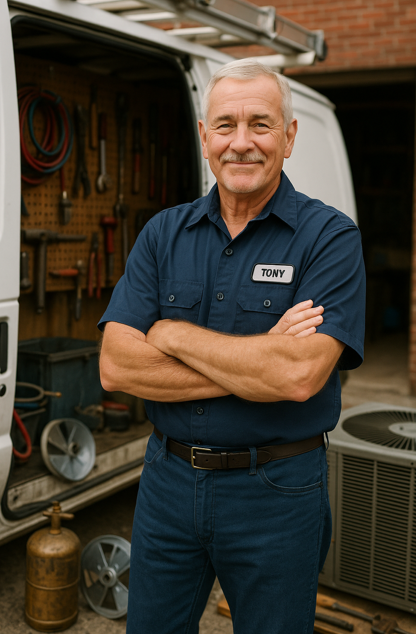🧩 What Does Efficiency Mean in the Real World?
You’ll hear a lot about SEER2 and EER2, but let’s get clear: SEER2 stands for Seasonal Energy Efficiency Ratio, and it tells you how much cooling you get for every dollar spent on electricity. Higher SEER2 = lower bills. And with updated DOE regulations in effect since 2023, packaged units must meet stricter standards.
Many R‑32 units exceed the minimum 14.3 SEER2, clocking in at 16 or higher, thanks to the improved thermodynamic properties of R‑32 refrigerant. According to the U.S. Department of Energy, these higher-efficiency systems can cut cooling costs by 20–40% compared to older units.
That’s not just numbers—it’s comfort and savings working together. 😎
💨 Performance: What You Actually Feel
So what’s the difference in real-world comfort? R‑32 systems have a higher heat transfer efficiency, meaning the refrigerant does more cooling with less effort. Here’s what that looks like in your home:
-
Cooler rooms faster
-
More even temps
-
Less noise from short cycling
-
Lower humidity without overcooling
Plus, because most R‑32 packaged ACs now include ECM (electronically commutated motors) and smart thermostatic controls, they ramp performance to meet demand, reducing both wear and tear and energy use.
For deeper guidance, the Air-Conditioning, Heating & Refrigeration Institute (AHRI) outlines how R‑32 performs better thermally and environmentally than older refrigerants like R‑410A.
💲 What It Costs (Upfront & Over Time)
Now let’s talk brass tacks—money. Because if a system’s not affordable over time, it’s not worth it.
A. Purchase & Install
-
Packaged R‑32 AC systems: $3,000–$5,000 installed (2 to 4 tons)
-
Split ACs (R‑410A): $4,500–$6,000 installed
(includes more parts and higher labor)
B. Energy Use
Assuming an average U.S. residential rate of $0.14/kWh, here’s what you’ll pay yearly:
| Unit Type | SEER2 Rating | Annual Energy Use | Approx. Cost |
|---|---|---|---|
| R‑32 | 16+ | ~3,930 kWh | ~$550 |
| R‑410A | 14 | ~4,500 kWh | ~$630 |
Over a 10-year period, that's $800 saved with R‑32—money that stays in your pocket.
The Environmental Protection Agency (EPA) notes that R‑32’s lower global warming potential (GWP) also means reduced environmental impact, which could translate into future utility incentives.
🔧 Maintenance & Lifespan
Efficiency isn’t just about what the unit does now—it’s how long it keeps performing. The good news? Packaged R‑32 units tend to require less maintenance than multi-component systems.
Here’s what to plan for:
-
Change filters every 1–3 months
-
Rinse outdoor coils every season
-
Annual refrigerant and electrical check-up
Follow these steps and you’ll extend your unit’s lifespan by 3–5 years on average. The American Society of Heating, Refrigerating and Air-Conditioning Engineers (ASHRAE) backs this up with data on preventive care boosting system efficiency and longevity.
💰 Long-Term Ownership Costs
Let's say your R‑32 unit costs $4,000 installed. Factor in electricity savings and reduced repairs, and your 15-year cost of ownership might look like:
| Line Item | R‑32 Packaged AC | R‑410A Split System |
|---|---|---|
| Initial Cost | $4,000 | $5,000 |
| Electricity (15 yrs) | $8,250 | $9,450 |
| Maintenance & Repairs | $1,200 | $1,800 |
| Total Cost | $13,450 | $16,250 |
That’s $2,800 in lifetime savings—plus simpler servicing and fewer headaches.
🎯 Bottom Line from Tony
Here’s the deal: if you're shopping in 2025, R‑32 packaged air conditioners are the way to go. You get serious savings, smoother comfort, and lower climate impact—all in one unit.
👉 Want to see your best options? Browse R‑32 Residential Packaged AC Systems now at The Furnace Outlet.
And hey, if you want help comparing models or calculating your ROI, drop me a message—I’m always around to help you cut through the noise. 🔧🔥







